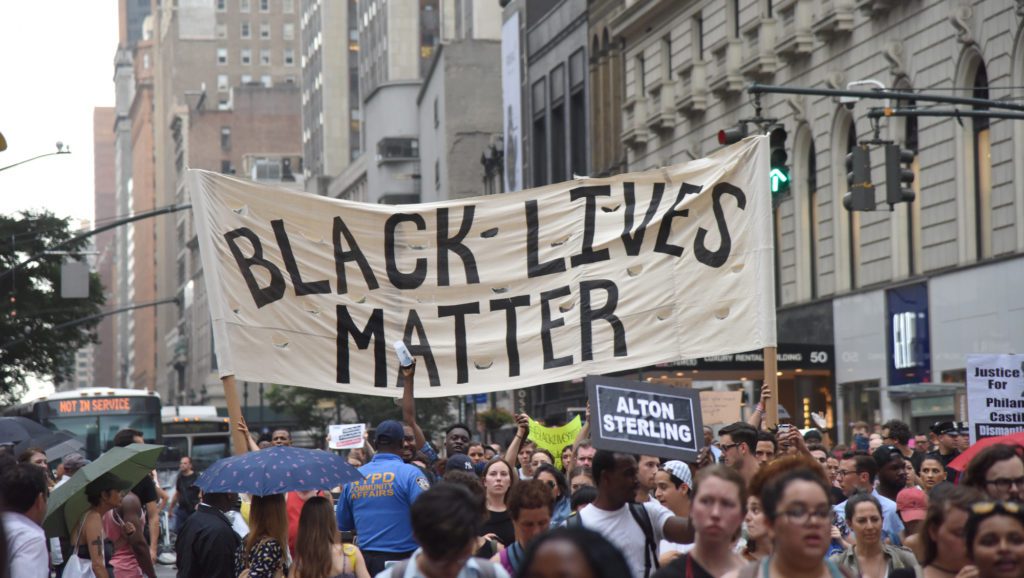Advertisers responded to COVID-19 with cookie-cutter platitudes, such as “In these uncertain times” and “We’re in this together.”
Now, the same brands are grappling with how to respond to protests across the country in the wake of George Floyd’s murder by Minneapolis police department officials.
The challenge goes beyond whether an advertisement is on point or not. Nike was widely hailed for its 2018 campaign with Colin Kaepernick, but after its “Don’t Do It” video response supporting recent protests, consumers quickly pointed out the lack of diversity on the company’s board.
L’Oréal also got torn apart for its statement supporting racial justice after former model Munroe Bergdorf highlighted how the company fired her for speaking out against white supremacy in 2017.
There’s also skepticism around Facebook CEO Mark Zuckerberg’s pledge to donate $10 million to racial justice groups.
“I don’t think people are interested in which white billionaire can out-donate the other,” said Liz Miller, VP and principal analyst at Constellation Research.
Here’s how brands that want to be involved in the racial justice fight can do so impactfully.
- Consider whether you should respond at all
Brands can learn from the negative reactions they got from their COVID-19 campaigns, which piled on the notion were “all in this together.” Consumers can see through platitudes and want to hear what that company is doing to make a difference.
“This is an opportunity for corporations and brands to step up and to take on social issues like racial bias,” said Eric Austin, associate director of global brand reinvention and media innovation at Procter & Gamble. “But it must be done in an authentic way, or there will be backlash from consumers.”
Brands that have made diversity a priority can authentically join the conversation. P&G began speaking out against racism in 2018 with “The Talk,” a spot highlighting the difficult conversations black parents must have with their children about racism. It followed up with “The Look” last year, which focused on biases against black men in America.
“It helps when brands have a history of demonstrated support for social justice,” Austin said.
Brands without a genuine way in could consider staying silent. On Blackout Tuesday, pharmaceutical giant Eli Lilly paused its digital media spend for 24 hours to give space for voices that needed to be heard, said chief media officer Lina Shields.
“We silenced our big mouth for a second so other people could speak,” she said.
Advertisers should also stay away from sales-driven messages when talking about social justice.
“Brands try to solve things with getting people to buy stuff,” said Elijah Harris, VP of paid social at IPG Mediabrands’ Reprise. “A younger audience is paying attention to that stuff.”
Brands shouldn’t be afraid to speak up about important causes. Seventy-three percent of Gen Z and millennials view brands that support the protests on social favorably, according to Morning Consult. But if a brand is going to say something, it has to go all in with its support.
“Don’t go halfway,” Shields said. “You can come off inauthentic if there’s a lack of courage.”
Even a simple acknowledgement that a company needs to do better can work, said Belinda Smith, global diversity ambassador at the WFA.
“So many situations could be diffused with a sincere acknowledgment about where you’re at,” she said.
- Back words with actions, and commit long term
Diversity initiatives in advertising have been a lot of talk and little action. Brands have an opportunity right now to change that.
“People are fed up with inaction,” Smith said. “Show us clearly where you stand and what you’re going to do so we can hold you accountable.”
That can be as simple as donating to organizations that support racial justice, elevating black business owners or committing to diversity programs internally.
Corporations can get involved in their communities and partner with local government to incite change, as Minneapolis-based Eli Lilly is starting to do. Or they can start initiatives like Procter & Gamble’s “Take On Race” fund, which aims to donate an initial $5 million to organizations supporting social justice, or The Queen Collective, which P&G launched in 2018 with Queen Latifah to elevate female directors of color.
IPG Mediabrands’ Reprise told clients that one social media post isn’t going to cut it. The agency recommended brands that went dark on Blackout Tuesday redirect those media dollars toward supporting causes for social justice.
“If you choose to speak out, know that actions and demonstrating you have done something to drive change is important,” Harris said.
But brands need to ensure they can support any action they intend to take for the long term.
“Can you sustain that level of commitment for the next five to 10 years?” Miller said. “If the honest answer is no, go back and reevaluate your statement.”
- Is your workforce and leadership team actually diverse?
Brands tend to focus on consumer research, but “in the case of race and diversity, your employees are going to be the first to call bullshit,” Miller said.
A brand speaking up on racism should have plans to drive diversity at every level of their company. Otherwise, messaging comes off as hypocritical, and sometimes tone-deaf. Who was in the room when PepsiCo decided that Kylie Jenner ad was a good idea?
Diversity also must extend to the agencies, production teams and creative supply chain marketers work with. Not enough brands are holding third parties accountable, Harris said.
“It’s not a conversation I have really had in the last three to four years,” he said. “Companies need to make those goals transparent so they can be held accountable for what they say.”
Companies can start by acknowledging their own workforce. Microsoft for instance told stories from employees that have experienced racism on Blackout Tuesday. “It was simple, super authentic, and you got to hear from real people,” Miller said.
If a company’s actions don’t align with their messaging, consumers will sniff it out from a mile away. When NFL commissioner Roger Goodell released a statement about being saddened by recent protests, the backlash was fierce and people quickly pointed out how the NFL tried to curtail 49ers quarterback Colin Kaepernick’s peaceful protest in 2018.
“That statement could’ve said, ‘[Recent] conversations have opened my eyes to how we should not have reacted three years ago, and this is how we’re going to change,’” Miller said. (Drew Brees, star quarterback of the New Orleans Saints, threw even more gasoline onto the fire Wednesday with his tone-deaf comments about Kaepernick’s protest.)
If a company isn’t yet diverse enough to source helpful feedback from within, hire one of the many diversity consultants available in the market.
“You can find someone to help you think through it,” Smith said.
- Embrace the backlash
Brands are rightfully nervous about getting involved in a dialog about racism.
But that doesn’t mean they shouldn’t try. “Saying you know you need to do better is better than not saying anything at all,” Harris said.
Backlash can be a learning opportunity. It wasn’t until H&M caught blowback from an ad featuring an African American boy in a sweatshirt that said “Coolest Monkey in the Jungle” that it moved to hire its first diversity and inclusion officer. The company clearly has a lot of work to do around diversity, but broad consumer backlash inspired a first step.
Good leaders are not afraid to be called out for their mistakes, and can refocus the conversation to prepare the company for blowback, rather than being afraid of it, Smith said.
“It’s inevitable, and it’s going to happen,” she said. “You have to figure out what side of history you want to be on.”















